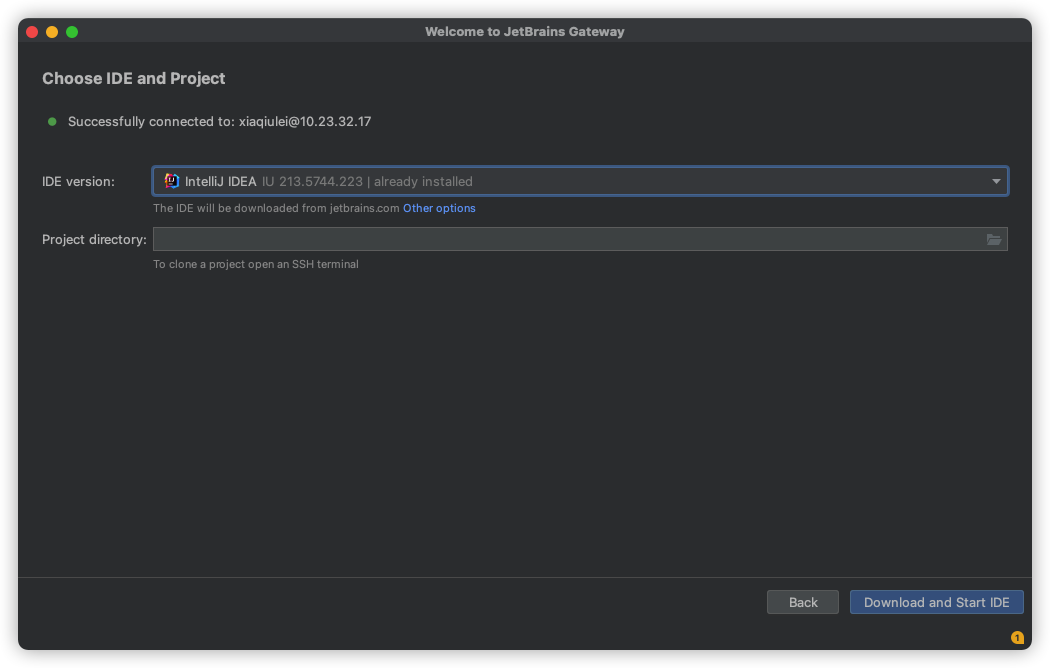

23:06:51,951 INFO - #c.j.g.s.d.i.SshCommandExecutor - Executing on remote host: 'echo $SHELL'.

Parameters: redirectErrorStream=false, usePty=true

23:06:50,603 INFO - #c.i.s.i.s.sshj - Authentication log: SSH connection to 23:06:50,973 INFO - #c.j.g.s.d.i.SshCommandExecutor - Executing on remote host: 'echo $HOME'. 23:06:49,729 INFO - #c.j.g.s.d.i.SshCommandExecutor - Executing on remote host: 'uname -sm'. $ egrep 'sshj|SshCommandExecutor' idea.log client-to-server workflowĪfter finishing the ssh server setup in JetBrains Gateway, let’s check the ports it opened: Let’s first start with the client-to-server workflow. Most of the technical details we want to investigate are actually the same in both ways. This fits well with the scheduling and provisioning of internal infrastructure for enterprise scenarios.
#Intellij idea remote development Pc#
Client (“Local machine”) is the developer’s PC where JetBrains (Thin) Client runs.Here is a quick summary of the terminologies of JetBrains remote development: Please note that many conclusions are just based on logs and network packet capturing, and there could be mistakes. In this post, I will try to answer the questions from an end-user perspective by watching the process tree and monitoring the traffic between different components. The official document explained in detail both the user guide and some security concerns. Is the network traffic routed to some relay? How should I configure the network policy if I’m hosting my remote servers in some enterprise environment?.How are different components launched and connected with each other in such a distributed way?.The split of the monolithic IDE architecture raises a couple of interesting questions: There is an official diagram introducing the architecture and definitions relating to JetBrains’ remote development. There are also numerous plugins built for customized in-house remote workspace orchestration. JetBrains Gateway is getting more and more popular, even though still in beta release, it has first-party providers like Gitpod, JetBrains Space, Google Cloud Workstations, and GitHub Codespaces.


 0 kommentar(er)
0 kommentar(er)
